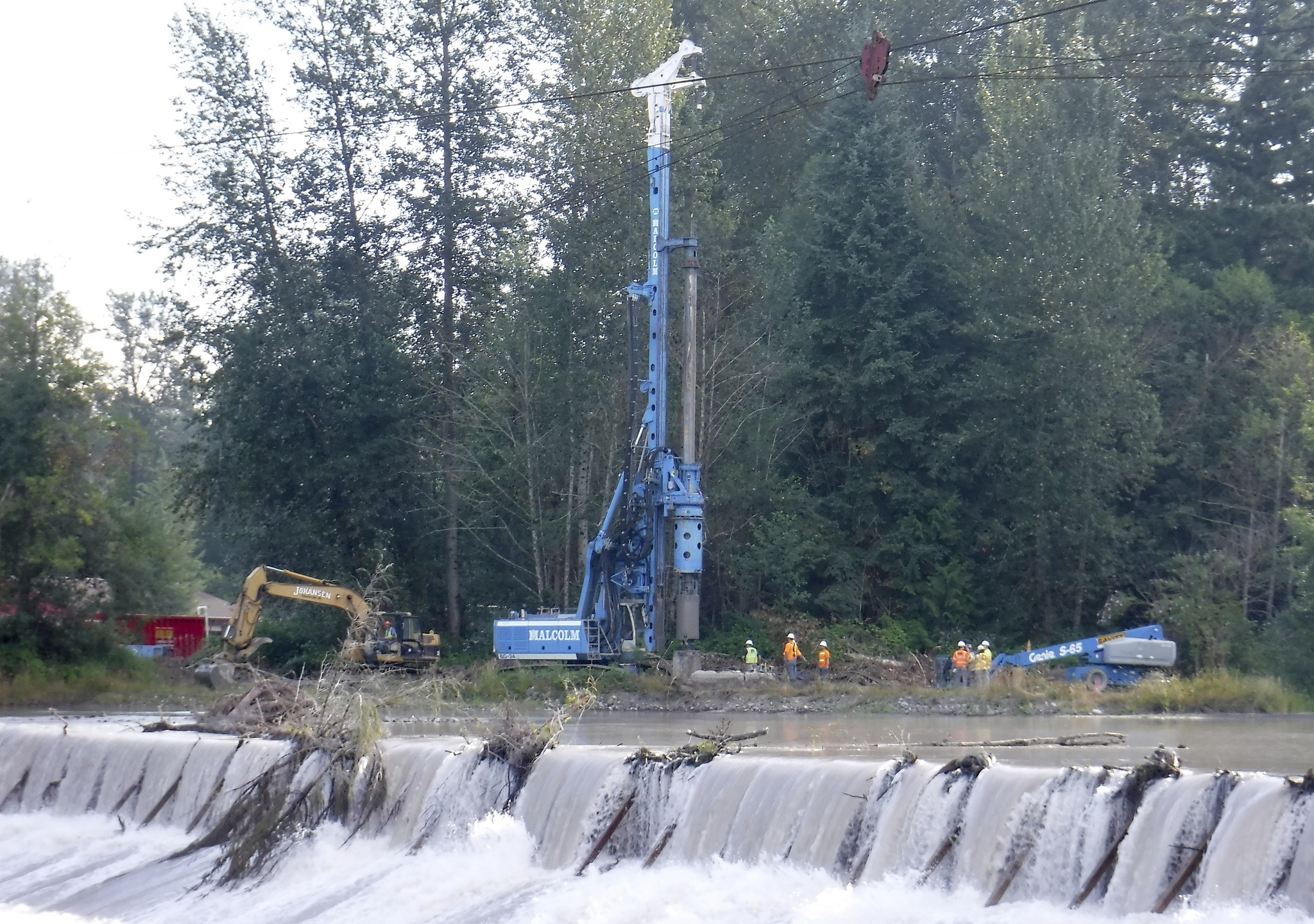Protecting salmon in the White River – moving them safely between Buckley and a point several miles upstream of Enumclaw – is an expensive proposition.
The Army Corps of Engineers is well into a project that will eventually span several years and cost somewhere between $50 million and $100 million, all in the name of enhancing salmon runs in the river. Some of the salmon heading upstream carry federal protection as endangered species.
Members of the Enumclaw City Council were recently briefed on the ambitious project by the Corps’ David Cook.
For years, salmon heading up the White River have been intercepted near Buckley, trapped and moved into waiting trucks. The fish are then transported to a release site above Mud Mountain Dam and returned to the river.
If not for the dam, there would be no “fish passage” problem, Cook said. But the dam exists for a reason.
Historically, the lower valley downstream from the Plateau would flood when the White River spilled over its banks. Looking to protect lives and property, the Army Corps of Engineers devised a plan for an earthen dam near Enumclaw. It was started in the late 1930s, interrupted by World War II, then completed during the post-war years.
Today, Mud Mountain Dam protects the homes and businesses of about 400,000 people, Cook said. And the dam does its job with little fanfare, typically allowing water to pass through unimpeded, but creating a temporary reservoir during times of high runoff from the Cascades.
“You know the dam’s doing its job when nobody knows it’s there,” Cook told the council.
Orders given to improve current operation
The current project, Cook said, is the result of direct orders from the National Oceanic and Atmospheric Administration. The federal agency mandated that the White River fish passage be improved and modernized.
Cook admitted Corps maintains a “pretty old structure” near Buckley and an “equally old” release site above Enumclaw.
NOAA’s marching orders came with specific numbers attached. A new facility must be able to accommodate 1.25 million salmon per year – or, as Cook said, “more than we’ve seen in that river.”
The Corps’ project manager said the numbers mandated for the White River project equal the salmon run found at the massive Bonneville Dam, which hosts four fish ladders on the Columbia River.
Cook said the local effort, when completed, will likely be the largest trap-and-haul operation in the nation.
Aside from setting the size and scope of the White River project, NOAA also mandated that everything be completed by the close of 2020. That meant a six-year window to design the project, put it out for bid and see all the physical work completed.
“In government time, that’s warp speed,” Cook said.
The planning process is well under way, Cook explained, adding that work in the river should begin during the summer of 2017.
Impact on Enumclaw
The first impact of the project comes prior to, and during, construction. Cook said the Corps’ will have to buy land, clear some property and widen some roads. Work could be done on a 24/7 basis or, at least, 20 hours a day, six days a week.
City Administrator Chris Searcy raised the issue of truck traffic associated with the project, once it’s completed. Trucks will leave the diversion dam on the Enumclaw side of the river, not the Buckley side. While the number of vehicles may not increase, the Corps will be using new, larger trucks.
Cook acknowledged the travel plans will not change. Trucks will continue to move over state Route 410 through Enumclaw to a point upstream of Mud Mountain Dam.


